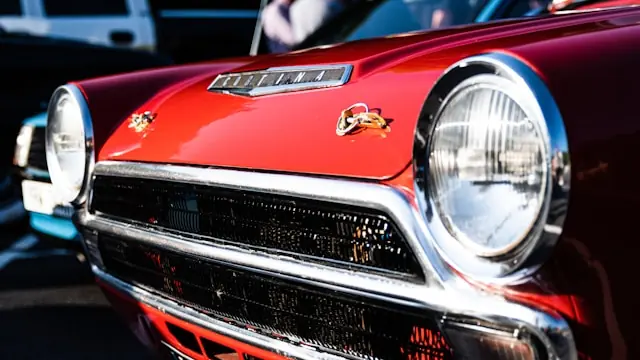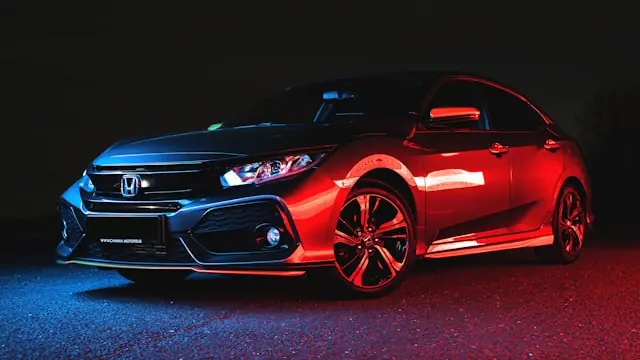The history of number plates in the United Kingdom is a fascinating journey that mirrors the evolution of the automobile itself.
Commencing early in the 20th century, the introduction of number plates was a response to the burgeoning popularity of motor vehicles and the need for a systematic method to identify and regulate them. From the simple and straightforward designs of the early 1900s to the complex and technologically advanced systems of today, UK number plates have undergone significant transformations.
The evolution of number plates reflects changes in legislative requirements, advancements in technology, and the increasing importance of security and fraud prevention. Through the decades, the seemingly mundane number plate has become an essential component of road safety, vehicle registration, and law enforcement, illustrating a unique blend of historical context and modern innovation.
THE PERSONALISATION OF NUMBER PLATES
But perhaps the most exciting element in the history of registration plates has been the potential to personalise them.
Personalised number plates have gained popularity due to their unique ability to blend individuality, status, and personal expression. The car quickly became a statement of image, and the number plate was a perfect extension of that statement.
For many, custom number plates serve as a form of self-expression, allowing vehicle owners to showcase their personality, interests, or even a memorable date or name. Additionally, personalised plates often convey a sense of exclusivity and prestige, making them a desirable accessory for those seeking to stand out on the road.
Beyond personal satisfaction, some regard personalised plates as a worthwhile investment. Unique combinations of letters and numbers can appreciate in value over time, and that's served to heighten the appeal of the number plate.
The appeal of owning a distinctive, easily recognizable registration number also extends to businesses, some of which use personalised plates for branding and marketing purposes. This blend of personal significance, social status, and potential financial return underpins the enduring popularity of personalised number plates.
THE FOUR BASIC TYPES OF NUMBER PLATE
UK number plates have evolved through several distinct formats since their inception, each reflecting changes in regulatory requirements and design preferences.
The earliest format, now known as the "dateless" plate, was introduced in 1903 and remained current until 1963. These plates featured a simple combination of letters and numbers without any indication of the vehicle's age.
From 1963 to 1983, the "suffix" format was introduced, adding a letter at the end of the plate to indicate the year of registration.
This was followed, during the period 1983 to 2001, by the "prefix" format. On "prefix" plates, the year identifier was placed at the beginning of the registration.
The current "new-style" format was introduced in September 2001, featuring a more complex structure. The first two letters denote the region. Then next in sequence, two numbers document the vehicle's age. Finally, three random letters are used to preserve the uniqueness essential to all number plates. This latest format not only provides more combinations - it can also identify the vehicle's origin and registration period at a glance.
DETAILED BREAKDOWN OF PLATE TYPES
Dateless Number Plates 1903-1963
Dateless number plates are the oldest and rarest registrations available. Originating in 1903, the first ever number plate to be issued was in fact A 1, which saw its first light in London, that year. Dateless registration numbers range from one letter and one number to three letters and four numbers leaving plenty of room for creativity when it comes to finding your ideal plate.
One particular reason why "dateless" plates are so called, is that a vast majority of the relevant records from the early 1900's are missing or incomplete. Add to this the fact that many councils issued car registrations at different times, and it becomes almost impossible to determine an accurate date for these plates.
Vehicle scrapping has heightened the rarity of dateless registration plates, and the fact that these "private" plates are not for sale through the DVLA's website means they can only be purchased from dealers or private sellers where available. But a dateless registration number can be assigned to any age of vehicle, and that goes some way towards explaining why they've become so incredibly popular.
Suffix Number Plates 1963-1983
The suffix style number plate was initially introduced in 1963 as a way for the DVLA to expand the number of possible combinations that could be issued to vehicles. It was decided that the new system would simply incorporate a single letter at the end of the registration as this would not only drastically increase the number of possible combinations but also due to the fact that the letter could be used as a year signifier. A suffix style number plate therefore consists of three letters followed by up to three numbers (1-999) followed by the single year signifying letter (excluding I, O, Q, U & Z). A new letter would be released once per year ranging from January 1963 up until July 1983.
Prefix Number Plates 1983-2001
The prefix style number plate was initially introduced in 1983 when the suffix style registration was beginning to run low in supply. The style was designed to be the reverse of the prior used suffix format where it consisted of a single letter as a year signifier (excluding I, Q & Z) followed by up to three numbers ranging from 1 to 999 followed by 3 letters. This in turn gave the DVLA millions more possible number plate combinations & it has gone on to remain a popular style of private number plate still seen on vehicles today. Prefix number plates also saw the introduction of two series of number plates being released per year starting with the S series in 1998.
Current Style Number Plates 2001-Present Day
Current style number plates were introduced back in 2001 when the prefix system came to an end and this is the system still in use to date.The current style registration is split into three separate sections, each with its own purpose. The first two letters indicate where the vehicle was initially registered. The first of these two letters indicate a region & the second a DVLA local office. The two numbers in the middle of the registration indicate the age of the vehicle based on a 6 month period ranging from either March to August or September to February. A new age period is started on the 1st March and the 1st September every year. Whilst the current style system is still in place. Finally, the last three letters are completely random and give the vehicle its unique identity.
Because of the way the current style number plate system is structured, all current registration numbers consist of exactly seven characters, something that was not the case previously. With the dateless, prefix and suffix system, numbers would range from two characters up to seven. As well as the above mentioned character restriction on current style number plates, additional rules were also brought into place such as a new mandatory font that was to be universal across all current registration numbers. As well as this there was also new rules against bolts however national flags are now approved on current number plates.
Irish Number Plates
Irish number plates often fall outside of the "big four" types, but these Northern Irish plates are assignable to vehicles registered in the UK, and they come with a major advantage.
Irish plates are popular due to their "dateless" format. Unlike the standard UK plates, which include a year identifier, Irish plates do not reveal the vehicle's age. This dateless feature allows vehicle owners to obscure the age of their car, which can enhance its resale value and aesthetic appeal. Additionally, Irish plates are often more affordable than their UK dateless counterparts, making them an attractive option for those seeking a personalised or unique registration number without the high cost. This combination of affordability and the ability to hide the vehicle's age contributes to the popularity of Irish number plates among UK vehicle owners.
Once it became possible to transfer cherished number plates, a trend of buying Irish number plates emerged. Irish plates are usually instantly recognisable, since they contain the letters "I" or "Z" - something which is not seen in prefix or suffix style number plates. This extends the combinations available, and enhances the desirability of Irish plates.
Letters such as "I", "Q" & "Z" have generally been left out of UK number plates as they can be mistaken as the numbers 1, 0 or 2, which in turn is problematic for the authorities when it comes to identifying vehicles in the case of a crime. Only since the newer style number plates has Z been a valid number plate character as previously Z & I had only been seen on Irish number plates and Q was a character used to signify kit cars as they could have been built at any time.
Irish registration numbers are also considered to be a dateless style of number plate, meaning that they can be assigned to any vehicle regardless of its age. Thus, buying an Irish number plate couldn’t be easier - you don’t have to consider the car onto which you're fitting it.
SUMMARY:
- 1903 - 1962: Dateless Registration Numbers
- 1963 - 1982: Suffix series - Introduction of a year identifying letter
- 1983 - 2001: Prefix series - Reverse of the older Suffix system
- 2001 - Present Day Current system used on cars today








